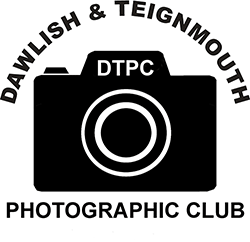Timing can make or break a picture, but never has this been more true than when shooting
Water Drop photography. Luckily, Hugh Letheren, guest speaker at the Dawlish &
Teignmouth Camera Club, was able to explain the rather technical process in layman’s terms and show the beautiful results of his efforts.
Hugh was a Chartered Engineer for companies such as Marconi and British Aerospace, but
after his early retirement and move to Launceston, he got interested in photography – and
in particular, water drop photography - after taking part in a DP (Digital Photography)
Challenge.

He explained that the first step in the process is the correct set-up in order to get the best
possible shot in-camera. For this you need an elevated water dispenser (Hugh originally
used a turkey baster); a table underneath with a dish filled with water; a couple of flash guns
which are essential to send a burst of light to freeze the bead of water and eliminate motion
blur; a camera on a tripod; a trigger for the camera; and a coloured backdrop.
Hugh showed images demonstrating the simple effect of a water droplet hitting the dish of
water as it created an upwards splash, known as a Worthington jet, and then astounded
everyone by telling them that it takes 2000 frames per second to successfully capture that
moment.

More images followed, each triumphing the previous one as his water drop photography grew more sophisticated. The addition of another water nozzle resulted in a Collision when the first drop bounced back up and collided with a drop coming down, or an Umbrella where
the second drop collides with the top of the Worthington jet.
Another phenomenon is called a Crown, and this happens when using thicker liquid such as acrylic paint. The use of food dyes to colour the water in red, blue and green resulted in a myriad of beautiful hues in the water shapes. Whilst the use of a compressed air jet created some extraordinary, lacey shapes and you could visualise dancers, musical instruments and creatures within them. One member even commented that the water drop images resembled fine Murano glass and Hugh agreed by saying that water drop photography can be considered art in many cases.
Hugh also showed some amazing waterdrop images from other photographers who had
introduced bubbles to their work and recommended that people look at the Drop Art
Photography on Facebook.
Everyone agreed that the water drop photography was remarkable, although several
members thought the technical side of things may be beyond them!
The Dawlish & Teignmouth Camera Club welcomes new members.
Find out more here: www.dawlishteignmouthcameraclub.co.uk
